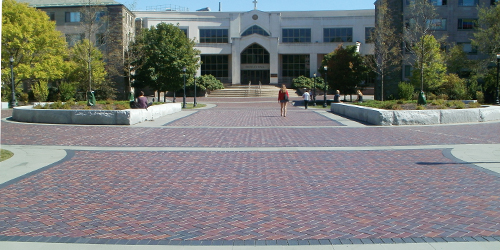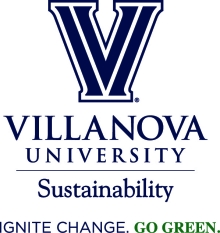Stormwater
Through a partnership between Villanova Urban Stormwater Partnership (VUSP) and Facilities, Villanova now has over 20 stormwater capture and infiltration/ ETsystems throughout campus. Many of these systems are equipped with monitoring devices to measure the quantity and quality of the rainwater as it moves through the different systems.
West Campus Bio-Infiltration Rain Garden
Built in 2001, this bio-infiltration Stormwater Control Measure (SCM) was designed to collect runoff from smaller storms. This SCM collects runoff from the West Campus student parking lots and is removed through evapotranspiration and infiltration. Water quality studies have shown that nitrogen and other parameters such as phosphorous and metals are significantly reduced.
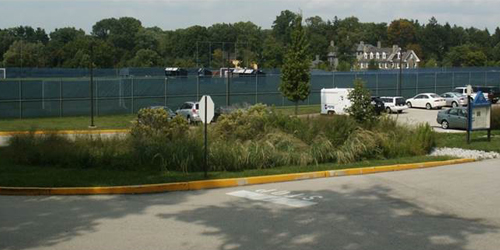
Law School Stormwater Wetland
Reconstructed from a 1998 detention pond, Villanova’s largest SCM was rebuilt in 2010 in response to the new Law School building located north of the wetlands. The stormwater wetland treats 41 acres of water runoff including 16 acres of impervious surface. The watershed includes students’ residence halls, classroom buildings, parking, roads, and a railroad. Since being rebuilt, the wetlands has seen growth in vegetation and species variety for both flora and fauna. It has been proven to be effective in both water quality and quantity control.
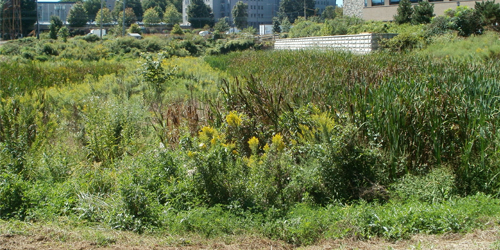
Pervious Concrete and Porous Asphalt
Completed in 2007, this site uses both pervious concrete and porous asphalt to capture stormwater runoff from the Mendel Hall parking lot. The stormwater passes through either the pervious concrete or porous asphalt surface, and infiltrates through a rock bed into the ground. In extreme events, when the capacity of the storage beds is exceeded, water is directed out to the stormwater wetlands. Site tests of the two technologies show equally comparable performance.
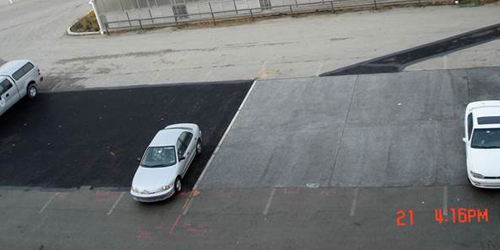
Parking Lot Treatment Train
The Treatment Train was installed in 2011 and includes a vegetated swale, followed by two rain gardens, and an infiltration trench. This SCM is designed to capture 1 inch of accumulated stormwater from the SAC parking lot. The swale and rain gardens act as pretreatment to the infiltration trench, reducing the sediment load and preserving the infiltration capacity over time.
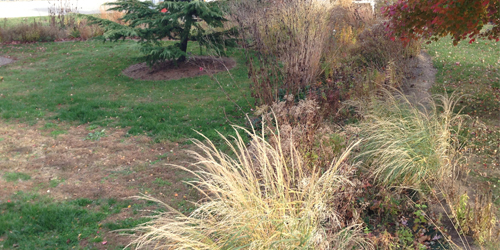
Rain Garden
There are a number of rain gardens located around campus that collect stormwater from nearby roofs or other hardscapes. Once collected, the stormwater is disposed of in one of three ways: released back into the atmosphere through evapotranspiration, absorbed by the garden plants, or filtered through the garden bed to the groundwater.
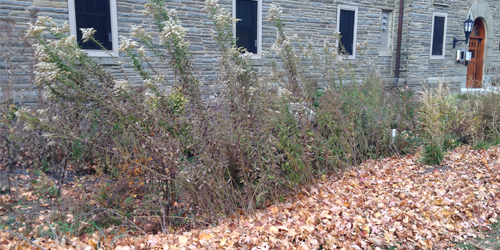
Drosdick Hall Green Roof
The green roof was a retrofit of a small portion of Drosdick Hall. The roof top construction took place in three days in the summer of 2006 and covers approximately 530 sf. By capturing and retaining the first half inch of every rain event, the green roof helps to reduce downstream stormwater volumes, stream bank erosion, and non-point source pollution. The green roof also protects the underlying roof material by eliminating exposure to the sun’s ultraviolet (UV) radiation and extreme daily temperature fluctuations.
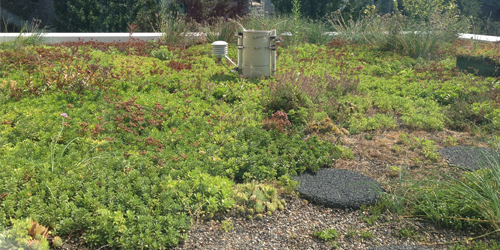
Permeable Pavers
Permeable pavers were added to the quad during a larger campus hardscape retrofit in 2002. The pavers capture approximately 50,000 sf of mostly impervious surface area, including pedestrian walkways, rooftops and some grassed areas. The permeable pavers are split up into three separate sections connected by piping. Below the pavers are rock storage beds (four feet deep) that help capture and slow the water flow. This system helps to reduce downstream stormwater volumes, stream bank erosion, and non-point source pollution.
